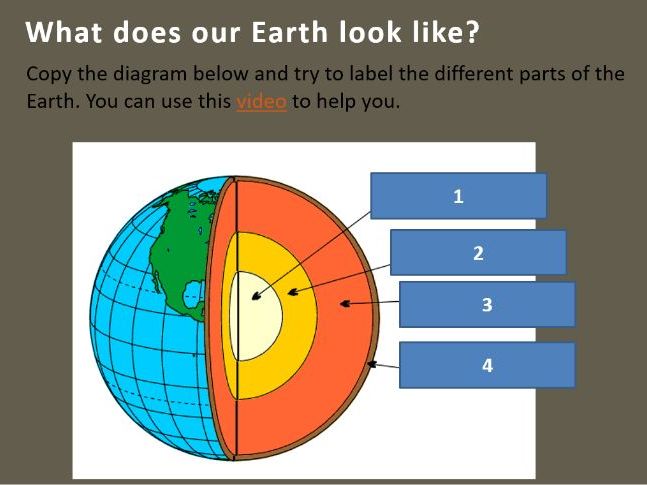

Lesson Plan: Structure of the Earth
Subject: Science (Earth Science)
Level: KS3 (Year 7–9)
Duration: 50–60 minutes
Learning Objectives:
By the end of the lesson, students will be able to:
Describe the structure of the Earth, including the crust, mantle, outer core, and inner core.
Explain the basic properties of each layer (thickness, composition, state).
Identify the six most common elements in the Earth.
Understand how the Earth’s structure affects geological processes (optional extension).
Key Vocabulary:
Crust
Mantle
Core (Inner and Outer)
Lithosphere
Asthenosphere
Density
Composition
Iron (Fe), Oxygen (O), Silicon (Si), Magnesium (Mg), Sulfur (S), Nickel (Ni)
Materials Needed:
Diagram of the Earth’s layers (poster or PowerPoint slide)
Model of the Earth (optional)
Worksheets with a blank Earth diagram for labeling
Colored pencils
Video clip showing Earth’s layers (optional)
Lesson Outline:
- Starter / Introduction (5–10 mins)
Ask: “What is inside the Earth? How many layers does it have?”
Show a short video or animation of the Earth’s interior.
Quick discussion: Why don’t we feel or see most of these layers?
- Main Activity (30–35 mins)
Step 1: Explain the Layers of the Earth (15 mins)
Crust:
Thickness: 5–70 km
Composition: mostly oxygen, silicon, aluminum
Solid, brittle layer
Mantle:
Thickness: ~2,900 km
Composition: rich in magnesium and iron
Semi-solid, flows slowly (convection currents)
Core:
Outer Core: liquid, iron & nickel, ~2,200 km thick, generates Earth’s magnetic field
Inner Core: solid, iron & nickel, ~1,200 km radius, very hot (~5,500°C)
Step 2: Six Most Common Elements in the Earth (5 mins)
Iron (Fe)
Oxygen (O)
Silicon (Si)
Magnesium (Mg)
Sulfur (S)
Nickel (Ni)
Activity: Ask students to guess which elements might be most common in the crust vs. core.
Step 3: Diagram Activity (10–15 min) Provide blank Earth diagrams for students.
Students label the layers and indicate the main elements in each.
Optional: Color-code layers for better visualization.
- Plenary / Review (5–10 mins)
Recap the layers and key elements.
Quick quiz:
“Which layer is liquid?”
“Name two elements most common in the Earth’s core.”
“Which layer is the thinnest?”
Discuss real-world connection: volcanoes, earthquakes, and plate tectonics.
Assessment / Homework:
Assessment: Check diagrams and answers to quiz questions.
Homework: Write a paragraph explaining why the Earth has layers and why the core is mostly iron and nickel.
Something went wrong, please try again later.
This resource hasn't been reviewed yet
To ensure quality for our reviews, only customers who have purchased this resource can review it
to let us know if it violates our terms and conditions.
Our customer service team will review your report and will be in touch.